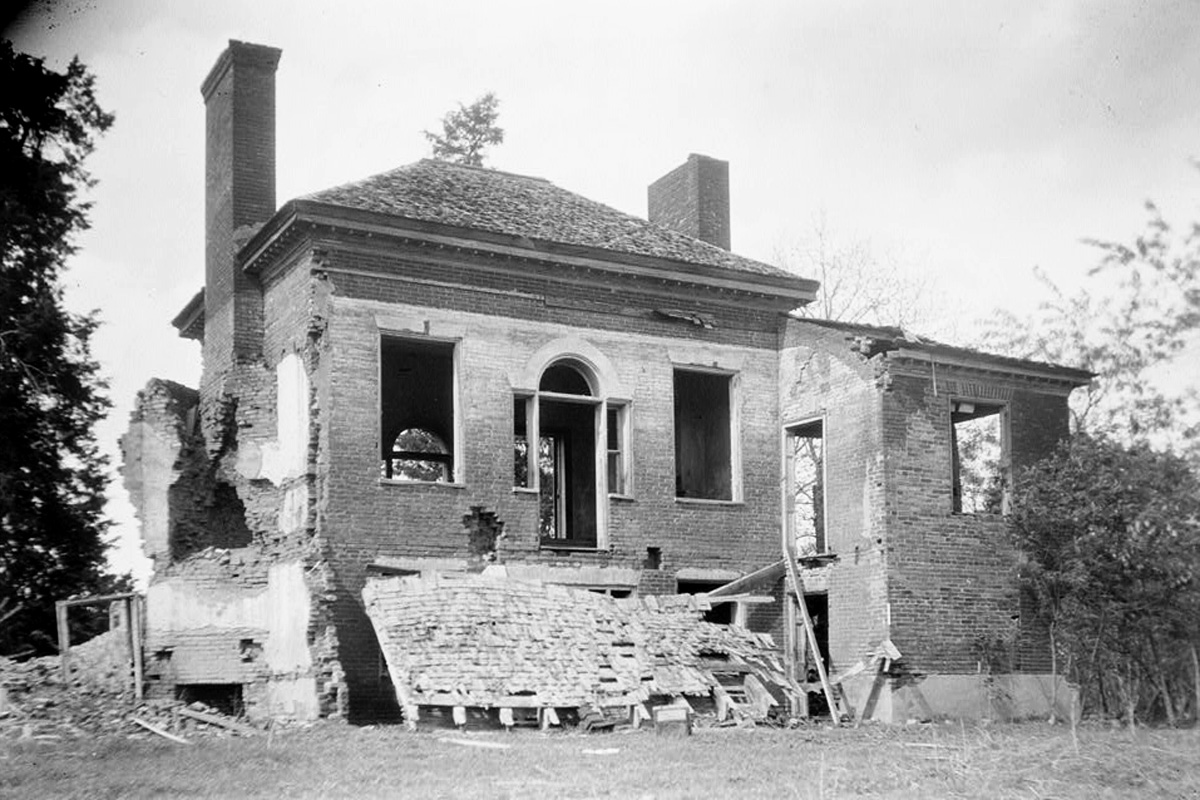A parade, political speeches about the upcoming November election, a barbecue picnic, music and ice cream: Sept. 4, 1875, dawned clear and promised Black residents of the idyllic Mississippi college town of Clinton, Mississippi, a fine day to enjoy the Republican Party rally on the site of a former plantation that Union troops had destroyed during the Vicksburg Campaign of 1863.
But just over an hour into the speeches at Moss Hill, a shot rang out. It touched off four days of violence in which white vigilantes murdered as many as 50 Black residents of Hinds County, as Mississippi College historian Melissa Janczewski Jones has documented.
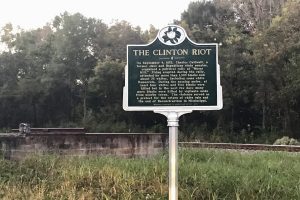
The Clinton massacre—the most deadly engagement in Mississippi Democrats’ campaign to restore white supremacist rule of the state—is not as well-known as the Tulsa Massacre of 1921, the centennial of which was commemorated in June of this year. Clinton had no “Black Wall Street”; most of the known victims of the 1875 massacre were tenant farmers or laborers, not wealthy property owners.
But because the violence in Clinton was one of many episodes of voter suppression, intimidation, lethal violence and election fraud reported in Mississippi in 1875, the U. S. Senate convened a special committee to investigate. Led by Sen. George S. Boutwell, R-Mass., five senators deposed dozens of witnesses in Washington, D. C., and Mississippi in the spring and summer of 1876. Their 2,000-page report includes eyewitness testimony from Black and white residents, Republicans and Democrats, victims’ widows and children—and from some of the perpetrators of the violence.
Many of the witnesses were fine storytellers in the best of southern tradition; their testimony, coupled with census data and other documents, permits a vivid glimpse into the past. Their stories shed light on the ways that Mississippi’s white supremacist “redeemer” politicians disenfranchised Black voters at the end of Reconstruction, and reveal the human cost of the Clinton massacre.
‘Peaceably If Possible, Forcibly If Necessary’
Only former Mississippi state Rep. Eugene Bonaparte Welborne would ever claim to know who fired the first shot in the Clinton massacre of 1875. The five men best able to corroborate or correct his version of events—two Black men deputized to help keep the peace at the rally, two young white men from a Democratic Party club in the county seat of Raymond and one of Mississippi’s first Black state senators—were dead.
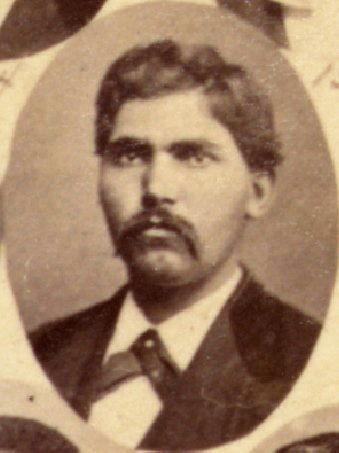
By 1875, many Black men in Mississippi had been participating in the democratic process as voters and elected officials for almost a decade, as
Vernon Lane Wharton reported in “The Negro in Mississippi, 1865-1890.” One of them was Eugene Welborne, the oldest son of local white merchant, planter and Confederate veteran Johnson W. Welborn and an enslaved Black woman. In 1875, Welborne owned the 260-acre farm where he had grown up. He lived there with wife, Sarah, and their infant son. His mother, younger brothers Walter and Emmett, and younger sisters Maggie and Ida lived nearby.
Welborne had joined the Republican Party after the Civil War and served as a constable from 1871 to 1873. He followed that appointment with a successful bid to represent Hinds County as a state legislator, and was on the Republican ticket for a second term in 1875.
Welborne was one of the organizers of the Sept. 4 Republican rally at Moss Hill, sometimes called Moses Hill. Another was his friend Charles Caldwell, Mississippi’s first Black state senator. Like Welborne, Caldwell was formerly enslaved and a blacksmith by trade. He had served on the Hinds County Board of Police after the Civil War, had been chosen as one of 16 Black delegates to the Mississippi Constitutional Convention of 1868, and was elected in 1869 to the state Senate.
The rally organizers invited two prominent local lawyers—Republican Hiram T. Fisher, a U. S. Army veteran and newspaper editor, and Democrat Amos R. Johnston—to speak. They arranged to hold the event on the grounds of Moss Hill, a former antebellum mansion about a quarter-mile northwest of the Clinton railroad depot owned by Walter Hillman, president of the Central Female Institute.
Welborne, Caldwell and the other organizers anticipated the possibility of violence at the rally. The previous year, Warren County’s Black Sheriff Peter Crosby had been indicted on false charges 36 miles away in west of Hinds in Vicksburg; a violent white mob removed him from his office and killed dozens of Black residents who had rallied to demand his reinstatement in a white massacre of Black people still sometimes referred to as the Vicksburg Troubles of 1874. Federal troops were sent to keep the peace and return Crosby to office.
But on June 7, 1875, Crosby’s white deputy shot him in the head in an attempt to assassinate him. Crosby survived, but never fully recovered.
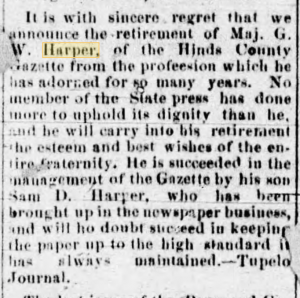
That same month, Raymond Gazette editor G. W. Harper had used his newspaper to urge local Democratic organizations to form committees of men to attend Republican political events, disrupt the speakers and force them from the podium “peaceably if possible, forcibly if necessary.” To limit the possibility of violence at the Sept. 4 rally, the organizers prohibited attendees from bringing firearms and liquor. Hinds County Sheriff W. H. Harney, who was African American like Welborne and Caldwell, deputized several young men as extra constables to help keep the peace.
‘Stop Telling Your Damn Lies’
The Moss Hill rally began with a parade at 9 a. m. Several hundred Black men mounted on horses adorned with red, white and blue ribbons rode through town and hoisted an American flag in the public square. As many as 2,000 Black families—including women, children and the elderly; around 75 white men; and two white women—gathered at Moss Hill. They included Ohio-born educator Sarah Dickey, who had recently bought a farm just outside of Clinton to open a female seminary for Black girls, and her 11-year-old niece, who had begged to accompany her.
Democratic speaker Amos Johnston spoke for the first hour. Around 1:30 p.m., Capt. Hiram Fisher took the stage. Multiple witnesses would later report that a group of young white men from the Democratic club in Raymond began heckling Fisher. Eugene Welborne saw one, a lawyer named Frank Thompson, taking periodic sips from a bottle of whiskey.
When a few of the young white men from Raymond drifted down to a nearby ravine, Welborne asked Sen. Caldwell and a Black deputy named Alec Wilson to try to settle them down. Two of them, Frank Thompson and Neil Wharton, had pulled out pistols. Sen. Caldwell convinced them to put the firearms away. Wilson identified himself as a deputy and told the young men that if they continued to cause a disturbance he would arrest them.
Other white men, many from Raymond, crowded around them. Black men began to leave the audience and head downhill to the action.
“I’ll do just as I please,” Frank Thompson told Wilson. “Get away from here.”
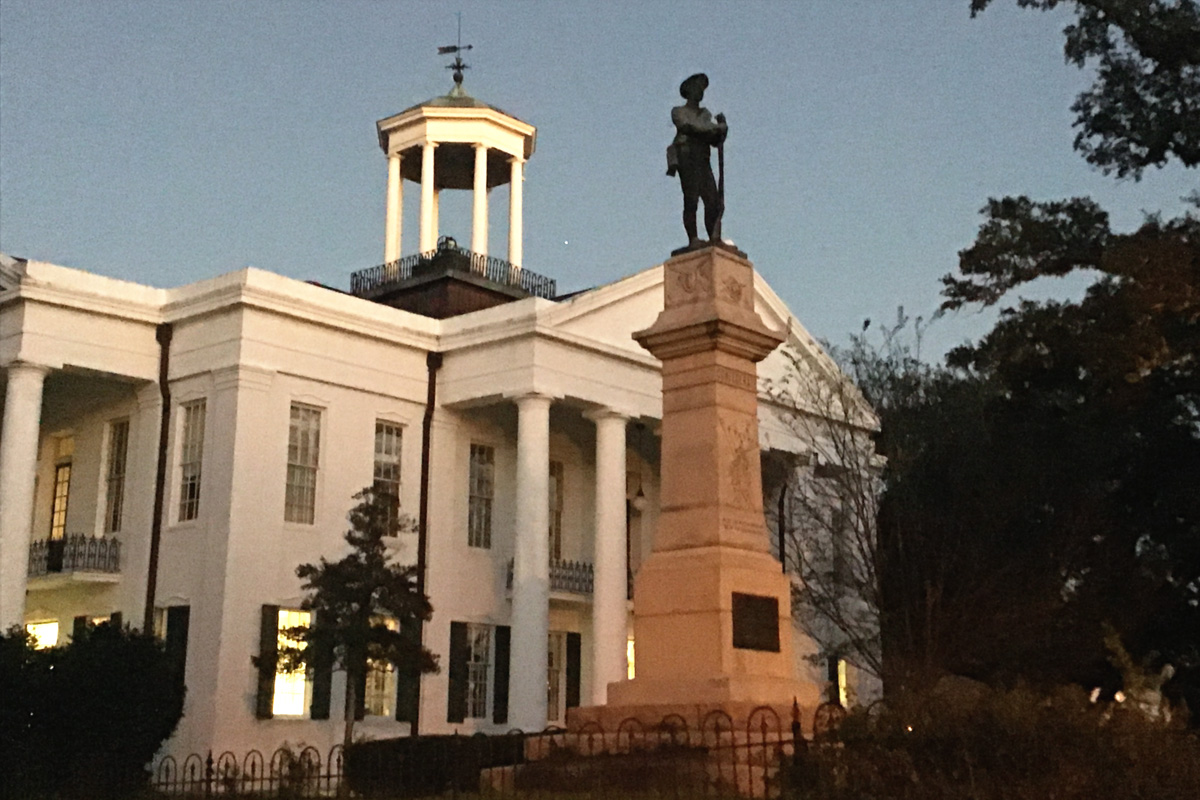
Capt. Fisher heard the raised voices and asked the timekeeper to pause the clock on his speech. Sarah Dickey heard him say that he hoped everything would end in peace. A white heckler in the audience called out, “Yes, if you will stop telling your damned lies.”
Deputy Wilson attempted to place Frank Thompson under arrest. Thompson pulled out his pistol and shot Wilson, killing him instantly.
Capt. Fisher didn’t hear the gunshot. He asked the band to play, hoping that music would entice the men leaving the audience to return. The band began beating their drums.
Rebel Yells: ‘Fall In, You Raymond Crowd!’
Someone in the crowd let out two Rebel yells, and a white man shouted, “Fall in, you Raymond crowd!”
According to Welborne, the young men from the Raymond Democratic Club formed a line, drew their pistols and began firing into the crowd. The shot, Welborne would later tell the senators, “rained in there just like rain from heaven.”
Women screamed, grabbed babies, called to their children and ran for cover. One mother hid her infant in the hollow of a tree, hoping to protect him from the gunfire, as historian Missy Jones found in her ground-breaking research on the Clinton Massacre.
Eugene Welborne was knocked off his feet. When the first salvo ended, he got up and ran uphill toward the tree line. The white men opened fire on him. He ducked behind a tree and returned fire with his six-shot pistol. Bullets flew around him—about 150 rounds—nearly skinning the bark off the tree. He retreated into the woods.

When the shooting stopped, three white and five Black people lay dead. Former Mississippi College student Martin Sively lay where he was shot. Frank Thompson bled to death in a field some distance from the ravine. Dr. Hillman’s neighbor Charles Chilton had come out of his house armed when he heard gunfire. Seeing the fleeing Black women and children, he handed his gun to a Black boy so he could open his gate and beckon them inside for safety. Witnesses later said that when he turned to go back up the steps to his gallery, an unidentified Black man mounted on a mule shot and killed him.
Twenty-eight-year-old Deputy Alec Wilson, the first victim of the melee, had been a farmer. His widow Betsey, 23; their 6-year-old son William; and perhaps other, younger children survived him. Another Black deputy and farm laborer, 27-year-old Lewis Hargrave from Dry Grove, also died at Moss Hill. He was mourned by his father William Hargrave, his mother Mary, and his 16-year-old sister Angy. Lewis Russell, 30, was the third Black man killed at the rally. He left a 44-year-old widow named Martha and her three grown sons.
The final two victims were Black children. Their names and ages are not known.
‘Keep Away By All Means’
Clinton’s white residents, unnerved by the spectacle of their Black neighbors marching and drumming at the Saturday morning parade, assumed that Black men were organizing into militias to occupy the town of Clinton and murder them in their beds. A company of men—including students from Mississippi College—gathered at the train depot. Mayor G. M. Lewis telegraphed for reinforcements.
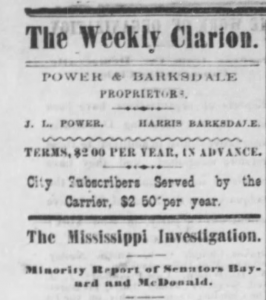
The men set up pickets on the roads leading into Clinton, elected former Confederate raider William Montgomery as their leader, and began to search the woods and swamps for Black men. White women labored over stoves in the headquarters set up at the Patrick Lewis Hotel and the Central Female Institute to keep the vigilantes supplied with hot coffee and biscuits.
Terrified for their safety, many Black families in Hinds County hid in the woods and swamps, leaving their homes and crops to be looted and destroyed. Entire families spent days “laying out.” Their fears were not unfounded.
Local white vigilantes were reinforced by expertly armed and trained white men from Vicksburg who called themselves “Modocs.” About 50 of them entered Charles and Ann Caldwell’s home that Saturday night and threatened two wounded men Ann Caldwell was nursing. Sen. Caldwell had left to seek refuge at the federal garrison in Jackson; the men told Mrs. Caldwell that they would kill him “if it is two years, or one year, or six; no difference.”
They added that “the southern people are going to have the South back to ourselves, and no damned northern people and no Republican Party; and if your husband don’t join us he has got to die.”
Eugene Welborne and his brother Walter attempted to return to their farm that night. They approached cautiously through the woods, and saw 60 or 70 white men surrounding the house. Some were the Welbornes’ lifelong neighbors: A. B. L. John, William Todd, B. W. Henry, Lawrence Lemon, John Cridle and their leader, Captain William Montgomery.
Montgomery’s betrayal may have cut the deepest. William Montgomery, a “reckless rider of indomitable energy … fond of horses, guns and dogs,” as Kay Cornelius called him, and his younger brother Lawson were close in age to Eugene and Walter Welborne. The men had known each other from childhood, and had probably ridden, fished and hunted together as boys. That friendship may have prevented the mob from harming Sarah Welborne, who was about 20, and her infant son, but it didn’t stop them from stealing two guns and some pistols, all of Welborne’s ammunition, his four mules and three horses, and 16 of his twenty head of cattle. They burned his good buggy and wagons.
Eugene convinced an elderly woman to approach the pickets claiming that she was bringing medicine for Sarah and the baby. They allowed her through, and she told Sarah that Eugene and Walter were alive and planned to seek refuge in Jackson. She carried Sarah’s reply back to the two brothers: “Keep away by all means.”
A White Vigilante Killing Spree
Other Black families in Hinds County did not fare as well. Early on Sunday morning, the white vigilantes “shot to pieces” Bob Beasley, almost a hundred years old, “defenseless and helpless.”
Just outside the grounds of Sarah Dickey’s school, they shot two of her neighbors who were coming to seek sanctuary with her.
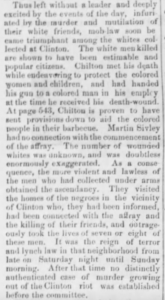
They murdered farm laborers 31-year-old Sam Jackson, Gabriel Brown, Alfred Hastings, Albert Hudson and Robert Robinson.
They killed 53-year-old farm laborer Simon Jackson, the president of the Clinton Republican Club, leaving his 18-year-old son Henry to care for his widowed mother Harriet.
They murdered Ben Jackson, 39, leaving his wife Julia with three young daughters, a son and an infant.
When they murdered 19-year-old Daniel Dabney, his mother Lily was left to grieve alone.
They murdered Moses Hill; his wife Jane, 35, assumed care of his 79-year-old mother Sarah.
While 23-year-old Amanda Stevens and her neighbor Alzina Haffa watched in horror, the vigilantes dragged her husband Joe, a 32-year-old farm laborer, and their son Isaac out of the house. They were “stood up on a stump and shot.”They came for Squire Hodge, a farm laborer born in Alabama. His 17-year-old wife, Ann, asked the men—her neighbors—if she could put his shoes on him before they took him away. They told her he didn’t need them. She put them on his feet anyway, tied the laces hastily and slipped his coat over him. A neighbor found his remains in the swamp a week later. Ann Hodge and her brothers picked up individual vertebrae and a part of her husband’s skull; they identified him by his shoes, still tied in Ann’s clumsy knots. She was left to raise two young children as best she could.
White Teacher in Black School: Shot Twice
By the weekend, Black neighbors told the Haffas, a white family from Pennsylvania who farmed and taught at a school for Black children, that William Haffa’s life was in danger. He refused to leave.
The barking of the family dog woke the Haffas on the morning of Monday, Sept. 6. Between 50 and 75 men surrounded the house. Alzina Haffa and her 16-year-old daughter Florence tried to bar the door. The men broke it down with a fence rail.
A Singer sewing machine salesman named Mosely choked Alzina and held a revolver to her head, while Florence and her brother watched, helpless. The youngest child, an infant, lay screaming on the bed. The men discovered William Haffa’s hiding place, and neighbors Jimmy and Sid Whitehead shot him twice. Sid Whitehead prevented Alzina from calling a doctor. Her husband, he said, would just die anyway.
The mob would not allow a wealthy white neighbor to bring a coffin to bury William Haffa. Black neighbors helped Alzina wrap him in a sheet and bury him in a crude box. William Montgomery took up a collection of about $50 for her; Gov. Adelbert Ames donated a train ticket.
In Cincinnati, Alzina Haffa had to beg for additional train fare to reach her in-laws in Philadelphia. In the months that followed her baby died.
‘We Would Have Went for You Sure’
Between 300 and 500 Black refugees had poured into Jackson from the area around Clinton. Some, mostly tenant farmers anxious to bring in their crops, requested “safe passage” documents from prominent local white men so they could return home. Eugene Welborne promised Amos Johnston, the Democratic speaker at the rally on the day of the riot, that he would quit politics in exchange for a safe-passage document.
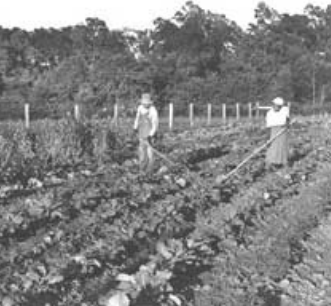
“If you will let me go home,” he told Johnston, “I will never have anything more to do with it at all; I will go there and be quiet.”
Johnston refused. He told Welborne that many of his white neighbors believed he had killed Martin Sively; bashed in Frank Thompson’s head in the field while he lay bleeding, cut off his finger, and taken a diamond ring from it; and had even personally killed “every man that was killed on the ground.” He advised Welborne to leave the area.
Undaunted, Welborne and Caldwell managed to return home in the third week of September. One neighbor offering protection may have been Will Montgomery.
“I was very glad I did not catch you,” Montgomery told Welborne that fall, “for we would have went for you (for) sure.” When Welborne went into Clinton to sell the crop and settle his accounts in the store of his late father’s friend John Chilton—brother of the man shot on his own front steps—a young man named D. W. Rice and some companions threatened to kill Welborne.
Chilton persuaded them to leave Welborne alone, but they told him to leave town forever. It was Eugene Welborne’s last trip to Clinton.
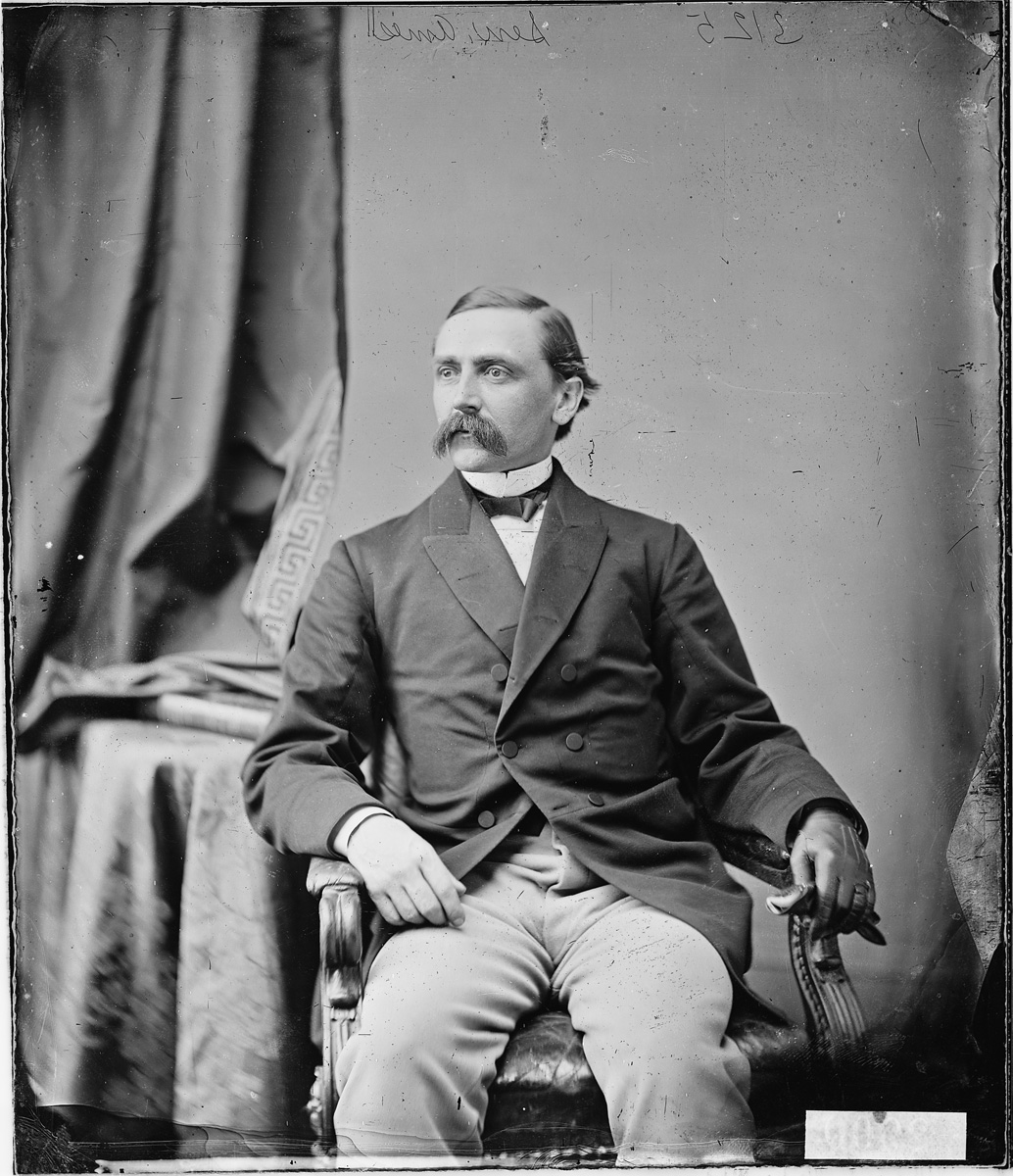
At the end of September, Gov. Ames mustered seven companies of state militias—five Black and two white—to keep the uneasy peace in the weeks before the November election. The first to muster, arm and offer itself for service was Company A, 2nd Regiment of Mississippi Infantry, under the command of Capt. Charles Caldwell and 1st Lt. Eugene Welborne. Earlier White Line vigilantes had captured weapons sent unprotected from Jackson to outlying militia units, so Ames tasked Company A to escort three wagon loads of arms to the Black militia company mustering at Edwards, a bit further west in Hinds County.
On the morning of Oct. 8, 1875, Company A mustered a hundred strong with four days’ rations, a hundred extra guns and ammunition. They marched out with flags flying, drums beating and bayonets fixed for the day-and-a-half march to Edwards on public roads. The first night they bivouacked outside Clinton, posting sentries and sleeping lightly. On their return, a second armed Black militia company from Brownsville joined them. A hundred more Black men, unarmed, tagged along.
Now 300 strong, the men marched triumphantly back into Jackson. White citizens were terrified and outraged by the demonstration.
Caldwell and Welborne had just signed their own death warrants.
‘They Are Getting Their Guns and Pistols’
The election of Nov. 2, 1875, passed without loss of life but was in no way free or fair. All over Mississippi, white men displaying guns patrolled near polling places. Near Aberdeen in northeast Mississippi, Democrats tore down a bridge and posted pickets to keep Black voters away from the polls. When they persisted, a squad of vigilantes from Alabama attacked them with cavalry, threatened them with an artillery piece, and then “sent a strong-arm squad into the crowd to beat [them] over the head.”
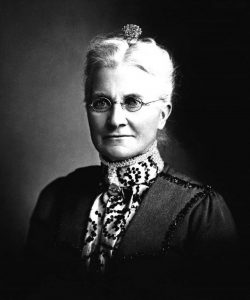
In Hinds County, Democrats bribed the Republican registrar to stay away. William Montgomery and other white farmers told their Black employees that if they voted Republican, their contracts would not be renewed.
In Clinton, Charles Caldwell and Eugene Welborne voted quickly and left. Most Black voters simply stayed away.
Sen. Caldwell was a trustee of the Mount Hermon Female Seminary, an institution of higher education for Black women that Sarah Dickey had founded in Clinton modeled after her alma mater Mount Holyoke Female Seminary (now Mount Holyoke College). Dickey visited just before Christmas, and Ann Caldwell told her she had dreamed twice the night before that her husband would be murdered. Dickey had heard death threats against Caldwell out in town. She left the house deeply troubled.
On the Thursday after Christmas, Caldwell and some friends went fox hunting. He returned home around 4 that afternoon, ate supper and went back out, probably to investigate an incident between one of his nephews and a white man. A neighbor stopped by and told Ann, “I think the white folks will kill (Mr. Caldwell); they are getting their guns and pistols.”
A young moon rose. Ann Caldwell went to her room to wait.
‘Never Say You Killed a Coward’
In town, Sen. Caldwell’s white acquaintance Buck Cabell invited Caldwell to join him in John Chilton’s store for a Christmas drink. Caldwell did not want to indulge, but Cabell insisted. Taking him by the arm, Cabell led him into the cellar of the store and poured.
The clinking of the glasses was the signal. Gunshots rang out.
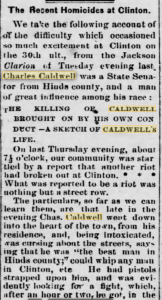
The bell on the Baptist chapel began to toll. Ann Caldwell looked out her window. Young white men who lived across the street were pouring out the door, sliding from the windows, jumping the fence and running toward the Baptist chapel. Ann knew that 150 guns had been stored there since the rally in September.
In the cellar of Chilton’s store, Sen. Charles Caldwell lay mortally wounded on the floor. He called for his friend Judge E. W. Cabaniss and for John Chilton. Neither responded. A Baptist minister named Nelson approached the door and offered to help if Caldwell wouldn’t shoot him.
“Take me to see my wife Ann,” Caldwell said. “I cannot live long.” The white men gathering outside refused to allow it.
“Then take me out of the cellar,” Caldwell demanded. “I want to die in the open air—not all closed up like a dog.”
Caldwell was bleeding out, his body going into shock. He pulled the sides of his coat together and said with dignity, “Remember when you kill me, you kill a gentleman and a brave man. Never say you killed a coward. I want you to remember it when I am gone.” Rev. Nelson helped him out into the middle of the street and left him there.
The shooting began again. The mob riddled Caldwell’s body with bullets until it flipped over: Ann would later count more than 30 wounds.
Ann Caldwell made her way toward Chilton’s store. In the light of the store chandelier she saw Judge Cabaniss holding a gun with a blue strap. Men told her to leave, or they would “make it hot for her.” Cabaniss would later claim that he hadn’t recognized Mrs. Caldwell.
Coming and going, Ann Caldwell tripped over the body of a dead man in the street. The assassins had shot her brother-in-law Sam in cold blood when he rode into town to keep him from raising an alarm.
Rev. Nelson came to the Caldwell home to tell Ann that her husband and brother-in-law were dead. He asked if she had any menfolks about the place, and promised no one would hurt her. Ann sent for Sam’s wife, Laura, and their three young children. She also sent someone to warn the Welbornes that the mob might come for Eugene and Walter next.
Nelson, Walter Hillman and another neighbor carried the bodies of Charles and Sam Caldwell into the bedroom, washed them, and laid them out in the parlor while the women and children watched.
“A braver life never had died than Charley Caldwell,” Rev. Nelson told them. “I never in my life saw a man die with a manlier spirit.”
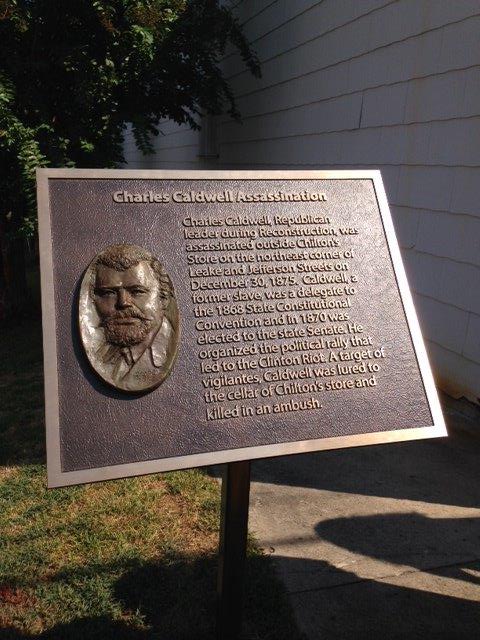
‘You Have Murdered My Husband’
The Modocs, trained and well-armed white vigilantes, arrived from Vicksburg on a 1 a.m. train and entered the Caldwell house, where Ann and Laura sat with their husbands’ bodies.
One man struck up a tune on a melodeon. The others began dancing and singing. They punched the men’s bodies and dared them to get up and fight. Encountering no resistance from the women, they finally left.
When Ann Caldwell’s message reached the Welbornes, Eugene called neighbors for reinforcement. “If they came there, I was going to make the best of it that I could,” he told the senators on the special committee. Twelve well-armed men barricaded themselves in the house with Eugene, Sarah, Walter Welborne and the baby.
The mob, 60 strong, arrived about an hour before daybreak. They surrounded the house and demanded that Eugene Welborne come out.
He refused. When the men threatened to open fire on the house, he asked for time to get his wife and children to safety. He sent Sarah and little Walter upstairs, hoping to keep them out of the line of fire. His brother advised him to make a run for it in hopes of keeping safe.
The men decided that the Modocs would expect Eugene and Walter to head west into Clinton. Hoping that fewer men had been posted on the east side of the property, Eugene and Walter burst from the door. Drawing fire, they broke right. Behind the stable was a hole in the fence; Eugene knocked some pickets off it. He and Walter rushed the line of white men, firing as they went, and broke through. Not certain who had escaped, the vigilantes remained in the yard.
About an hour after sunrise, Eugene crept back and found the men gone. Sarah told him that the men had searched and looted the house, and had given Eugene 24 hours to leave the state.
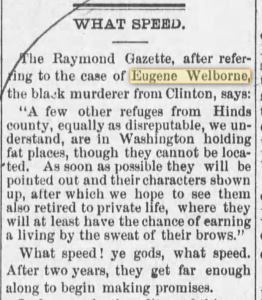
Using money their mother had saved, and wearing Confederate uniforms that had probably belonged to their father or to Captain Montgomery, Eugene and Walter Welborne caught a 3 a.m. train from Jackson. They arrived in Washington, D. C., on New Year’s Day, 1876.
Judge Cabaniss called on Ann Caldwell that morning to ask if he could do anything for her.
“Judge,” Ann replied with dignity, “you have already done too much for me. You have murdered my husband, and I don’t want any of your friendship.”
No Reparations for Clinton’s Devastated Black Community
Despite being shunned by the good white citizens of Hinds County, and despite threats to her life, Sarah Dickey refused to leave the Mount Hermon Female Seminary. She and her staff taught about a hundred Black girls and young women every year until her death in 1904.
Capt. William Montgomery, revered as a local Confederate hero, continued to farm outside Clinton. Late in life he penned a memoir of his Civil War service; it remains in the possession of his family.
Charles Hillman Brough, the nephew of Moss Hill owner Walter Hillman, was born the year after the massacre and grew up in Clinton. A local historian and professor beloved at Mississippi College for his easy grading, he wrote a monograph on the Clinton massacre sympathetic to the white vigilantes.
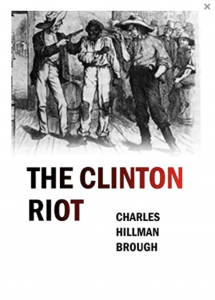
Brough was elected as the governor of Arkansas in 1917. Two years later, tenant farmers in the town of Elaine, Ark., tried to form a union to demand higher wages. When Black organizers trying to prevent white men from entering and dispersing their meeting killed two white men, vigilantes from Arkansas and Mississippi murdered as many as 200 Black residents of the area.
The four days of violence in September 1875 devastated the Black community around Clinton. Families with small children disintegrated. On the 1880 census, Julia Jackson is listed as a laborer, and her children are gone—probably divided among family and neighbors. Martha Russell moved to Shelby, Tenn. In 1880 she lived alone, supporting herself as a laundress.
Sam Caldwell’s widow Laura adopted their 12-year-old daughter out to Sarah Dickey. Annie Caldwell trained as a teacher and lived at the school until she married. William Montgomery would tell the special Senate committee that in time most of the Black families who left Hinds County as refugees returned. More likely, many of the families simply moved on.
Eugene and Walter Welborne made new lives in Washington, D. C. Walter’s youngest daughter Ruth would be one of the first 14 Black women to join the U. S. armed forces, serving as a Navy yeoman during World War I.
The special Senate committee found that Mississippi’s white Democrats had violated the civil rights of the state’s Black citizens in a systematic campaign of election fraud, voter intimidation, property destruction, and murder intended to disenfranchise Black voters and oust Republicans from public office in 1875. They also stated that white Democrats’ attempts to justify the violence lacked substance and honesty.
Nevertheless, no actions were taken and no reparations made. In recent years, the City of Clinton has commemorated what it calls the “Clinton Riot,” but has not made efforts to repair the damage it caused generations of Black residents.

Violent tactics white supremacists openly used in the Clinton massacre to oust Republican officials and to intimidate and disenfranchise Black voters became known as the Mississippi Plan. The use of violence to roll back legal gains of Black Mississippians since the Civil War and Emancipation was a strategy that quickly spread to other southern states.
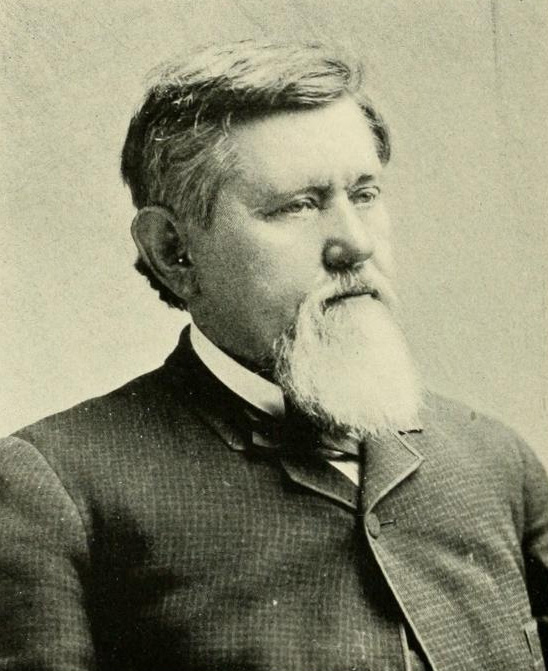
While the violence in Hinds County in 1875 led to the greatest loss of life, congressional investigators documented episodes of assault on and intimidation of Black voters in multiple Mississippi counties in 1875 and 1876. The violence continued through much of the 20th century, both in the form of riots/massacres and lynchings, long after the Second Mississippi Plan inserted Jim Crow laws into Mississippi’s new 1890 Constitution to finish the violent disenfranchisement work of the 1875 Mississippi Plan.
Federal troops withdrew from all southern states by 1877, ending the Reconstruction era. Small numbers of Black men continued to vote in Mississippi until the adoption of the new state constitution in 1890 that effectively disenfranchised Black voters through poll taxes, “literacy” tests and residency requirements. Led by U.S. Sen. James Z. George, the 1890 restrictions did not use language specifically targeting Black voters in the document, but intentionally ended their hopes of enjoying the full benefits of citizenship for almost a century to come.
The official 1890 constitutional record stated: “It is the manifest intention of this Convention to secure to the State of Mississippi ‘white supremacy.” The Second Mississippi Plan continued the strategy of disenfranchisement and oppression of Mississippi’s Black citizens begun by white vigilantes and local leaders at Moss Hill back in 1875.
This piece officially kicks off the Mississippi Free Press’ Race Violence Project, with detailed narratives and other reporting, storytelling and data about little-known incidents of violence in our state designed to terrorize, demonize and disenfranchise Black Mississippians. Watch for the new Mississippi Race Violence microsite, including focus and examples of how white Mississippi journalist outlets covered, and encouraged, white terrorism since the Civil War. See coverage of historic race violence in Mississippi to date in this archive.
Correction: The original text above stated that State Sen. Charles Caldwell was the first Black state senator in Mississippi. He was not the first. We apologize for the error.
Additional Reading and Sources
- Melissa Janczewski Jones, “The Clinton Riot of 1875: From Riot to Massacre,” Mississippi History Now (September 2015) and “Clinton Riot (and Massacre) of 1875,” Mississippi Encyclopedia
- Martha Huddleston Wilkins, “Education for Freedom: The Noble Experiment of Sarah A. Dickey and the Mount Hermon Seminary.” Ph. D. Dissertation, University of Mississippi School of Education. The University of Mississippi, 1985.
- Tracey L. Brown, “The Life and Times of Ron Brown.” New York: William Morrow & Company, 1998.
- Testimony of Eugene Welborne, Margaret Ann Caldwell, Alzina Hoffa, Adelbert Ames, James Lusk Alcorn, William Montgomery, and others in George Sewall Boutwell, Mississippi in 1875: Report of the Select Committee to Inquire into the Mississippi Election of 1875. United States 44th Congress. Washington: Government Printing Office, 1876, p. 499. Hereafter, Boutwell Report.
- Dr. Charles Hillman Brough, “The Clinton Riot.” Publications of the Mississippi Historical Society, 6 (1902).
- Herbert Apteker, “Mississippi Reconstruction and the Negro Leader Charles Caldwell.” Science and Society, Vol. 11, No. 4 (Fall, 1947).
- Kay Cornelius, “Will Montgomery: A Mississippi Scout and Skirmisher.”
- Helen Griffith, “Dauntless in Mississippi: The Life of Sarah A. Dickey, 1838-1904.” Dinosaur Press, 1965.
- Blanche Butler Ames (ed.), “Chronicles from the Nineteenth Century: Family Letters of Blanche Butler and Adelbert Ames.” Privately issued, 1957.
- Clarksdale Habitat for Humanity, “Coahoma County History and John Milton Brown”
- Elizabeth E. Flagg, “The Mary Lyon of the South.” The Women’s Voice and Public School Champion (Boston), 29 Aug., 5 Sep., 12 Sep., 1896.
- George C. Rable, “But There Was No Peace: The Role of Violence in the Politics of Reconstruction” (2007)

